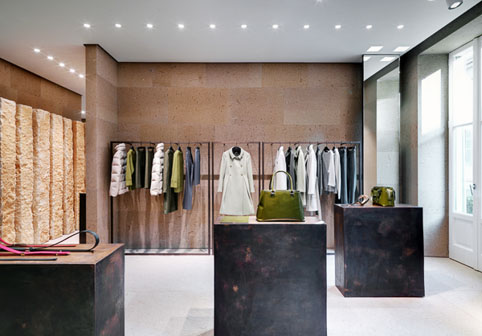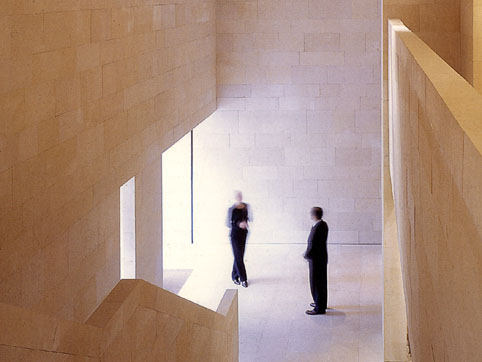Stone in the retail space

Claudio Silvestrin, Interiors of Giada flagship store in Milan, 2013 (stone supplied and crafted by Pibamarmi)
In the typological, functional and aesthetical transformations of the contemporary retail spaces, stone has a strategic role with a double identity: it is the incarnation of persistence, luxury and prestige, qualities that it has always represented; but at the same time it has the mission to embody the peculiarities of a sober and minimal style, a conception linked to the search for a new equilibrium between people and the environment surrounding them. Claudio Silvestrin is one of the most important interpreter of this second tendency: for long time the architect has been working on retail interior design with essential stone settings characterized by natural surfaces, opaque and slightly imperfect, conceived to be in dialogue with light in several refined variations of balanced intensity.

Claudio Silvestrin, Interiors of Armani store in London, 2003
Choosing in particular limestones and granites, and colours like greys, cream or earthy tones, Silvestrin welcomes customers in suspended and fascinating atmospheres, like timeless scenarios with no specific location, which isolate and give more value to the merchandise. In this way choice and purchase are highlighted with no accumulation of stimulations and messages.
These are introspective microcosms, quiet and empty, where stone covers floors and walls in continuous and homogenous textures, with careful attention to details in the different levels and in the walls disposition.


Claudio Silvestrin, Interiors of Giada flagship store in Milan, 2013 (stone supplied and crafted by Pibamarmi)
In this way Silvetrin has worked with discretion and consistency with several refined brands, whose identity is based on quality and exactness. This can be clearly seen in the Giorgio Armani stores, created everywhere in the world since the first 2000s; or in the Princi bakeries in Milan, and in the recently completed Giada shops as well.
In this last case the limestones were sawn in large slabs or rough-hewed to create irregular surfaces with a naturalistic touch, to form continuous straight walls or series of elementary-shaped monoliths.

Claudio Silvestrin, Interiors of Princi Speronari Duomo bakery in Milan, 2010
Next to stones, oxidized materials are used for stalls and natural woods for furniture and seats. Colours are light for walls and floors, or earthy and volcanic for the furnishing elements. Everything contribute in the definition of a secluded relaxing space, ideal for an attitude of buying, but also of living, focused on the exaltation of naturality, of intimacy over publicity, of essential rituals linked to the everyday body- and mind-care.
by Davide Turrini